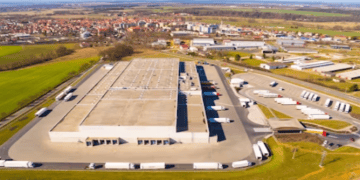The international trade landscape is undergoing notable shifts, driven by digital transformation, evolving policies, and global dynamics. Reports from leading trade Vietnam is projected to rank among the top three Southeast Asian nations in industrial competitiveness by the end of this decade, according to an action program released by the Ministry of Industry and Trade (MoIT) this week.
The initiative aligns with Resolution No. 29 from the 13th Party Central Committee, which aims to further promote the country’s industrialization and modernization through 2030, with a vision extending to 2045.
The program sets a target for the industrial sector’s contribution to GDP to exceed 40%, with the manufacturing and processing industry accounting for approximately 30%. Additionally, the average per capita value added in these industries is expected to surpass $2,000, while the proportion of labor in industrial and service sectors is anticipated to exceed 70%.
To achieve these objectives, Vietnam plans to establish several large-scale industrial corporations and enterprises that possess international competitiveness in key industries. The development of domestic industrial clusters with global competitiveness and mastery of certain production value chains will also be prioritized.
Key strategies include expanding export markets for industrial products, particularly through leveraging free trade agreements that Vietnam has signed, assisting exporters in navigating technical barriers in import markets, and gradually increasing exports of processed industrial goods to new destinations.
The country aims to enhance supporting industries in areas such as smart electronics, automotive, textiles and garments, mechanical engineering, automation, biotechnology, and high-tech sectors. Import management measures will be implemented in line with commitments made to bolster the growth of essential national industries.
Furthermore, Vietnam will focus on refining the legal framework to support other major industries, including metallurgy, mechanical engineering, chemicals, energy, and digital technology. Developing raw material sectors, particularly in garments and footwear, will also be a priority.
According to the General Statistics Office (GSO), Vietnam’s industrial production index (IIP) increased by 8.6% year-on-year in the first nine months of this year, signaling a continued recovery in the sector. The growth was primarily driven by the manufacturing sector, which rose by 9.8%, along with electricity production and distribution (up 11.1%) and water supply and wastewater treatment (up 9.9%). However, the mining sector experienced a decline of 6.4%.
Notable industries with significant growth during this period included steel (up 27%), oil and gas (20%), fabrics (16%), NPK fertilizer (13%), and automotive manufacturing (12%).
The GSO reported that the number of workers in industrial enterprises increased by 1.1% month-on-month and by 5.2% year-on-year as of September 1. As of September 30, the inventory index for the processing and manufacturing industry was estimated to have risen by 5.2% compared to the previous month and by 8.5% compared to the same period last year.
Get top supply chain report news on The Supply Chain Report. For international trade insights and tools, visit ADAMftd.com.
#IndustrialCompetitiveness #VietnamIndustry #ManufacturingGrowth #SoutheastAsia #EconomicDevelopment

















